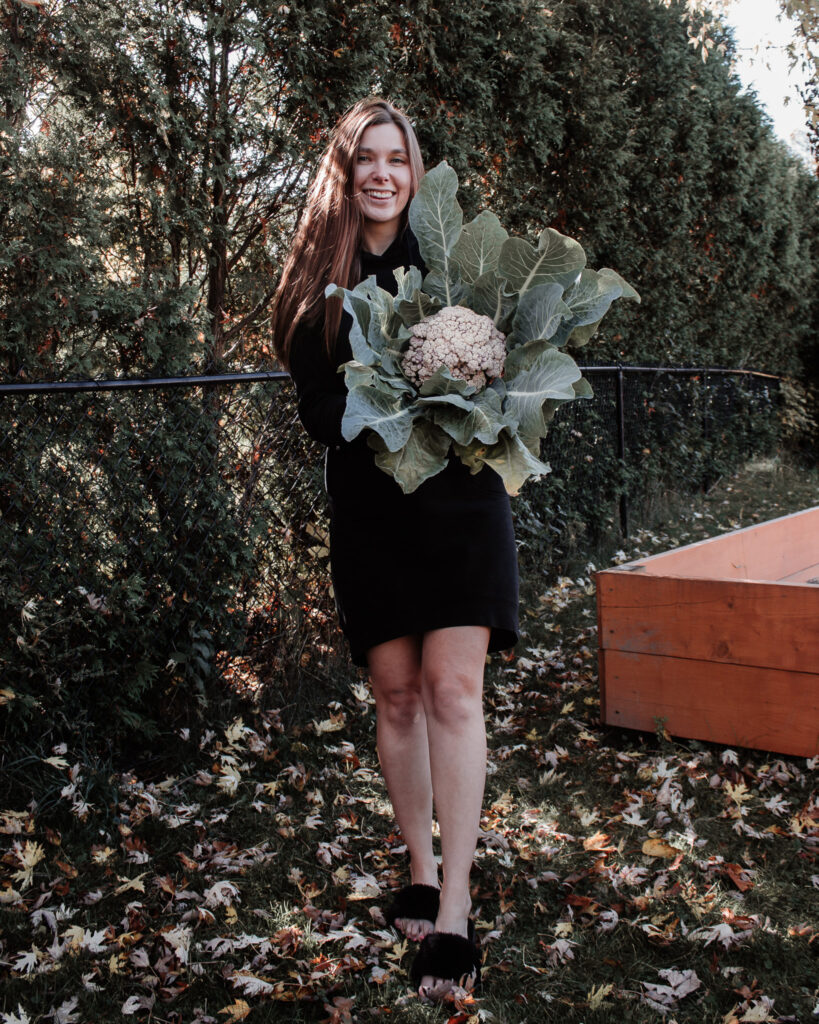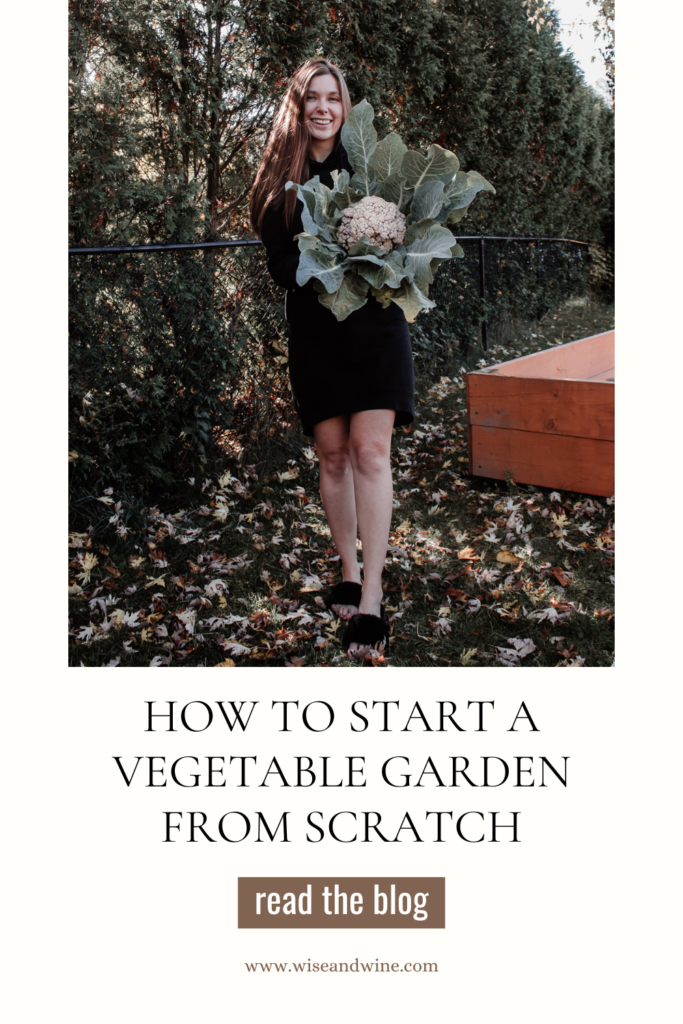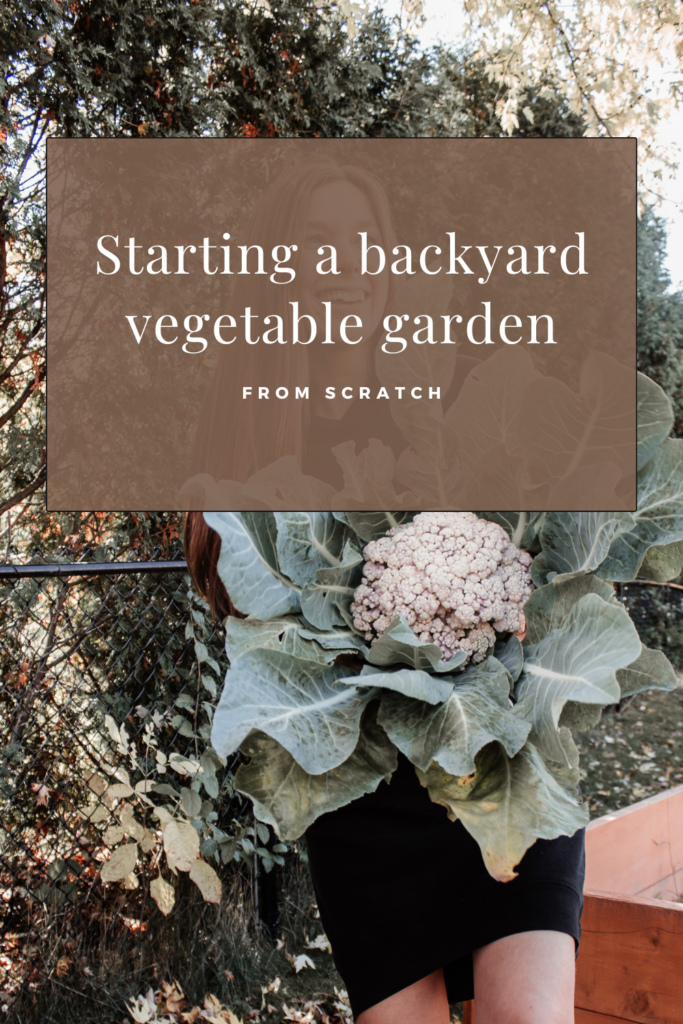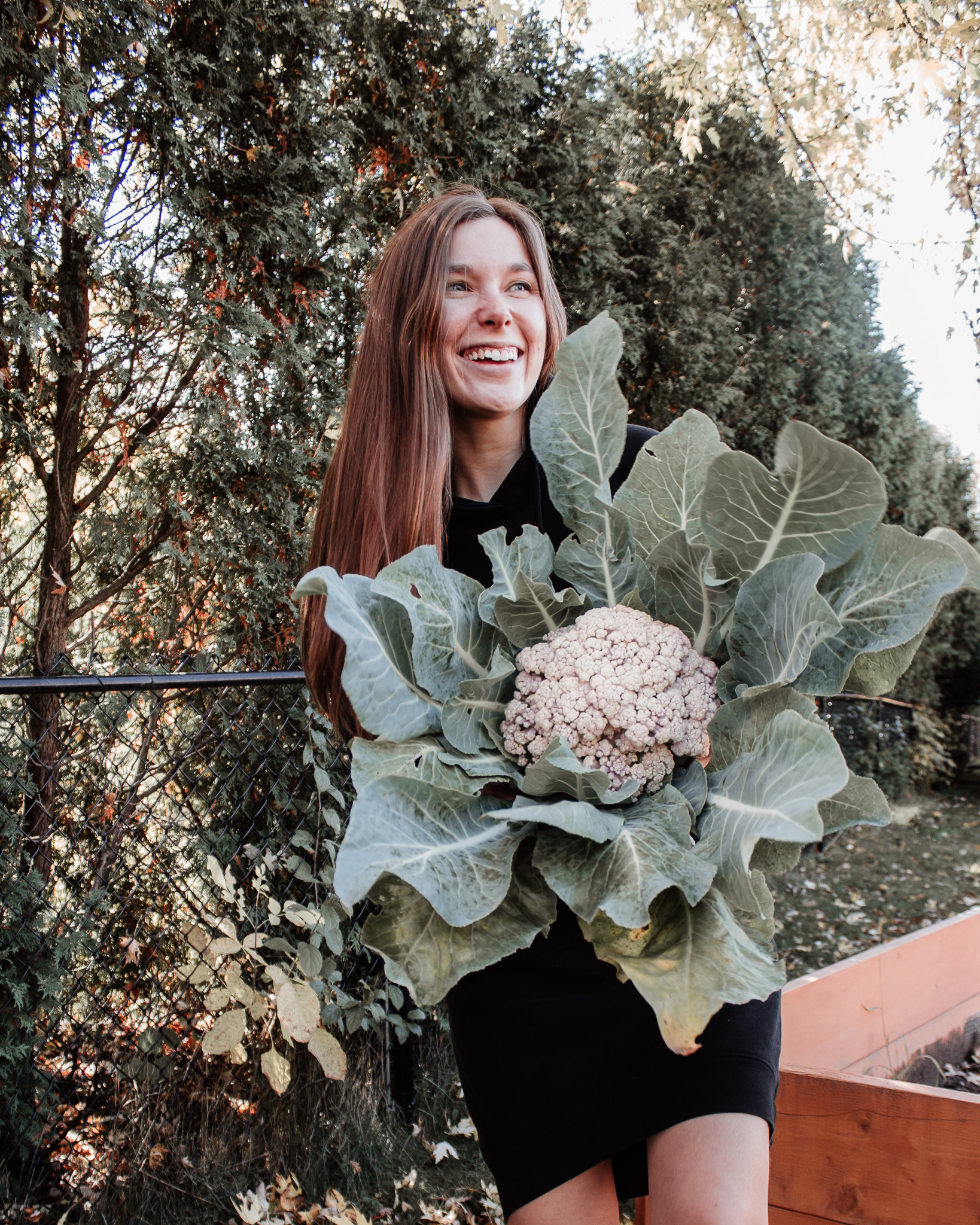My plans for starting a vegetable garden in 2024
We moved in the summer! Right in the middle of harvest season, actually. So I was forced to leave behind my large vegetable garden in Ontario. It was literally right when everything was just about ready to harvest. But the move was so worth it and we were very happy to make it happen that quickly. Now I’m starting a vegetable garden from scratch again… This time in British Columbia, Canada. We relocated to the Okanagan Valley, which has very different growing conditions than Ontario did.
Honestly, I think starting a vegetable garden all over again is going to be a good thing! There are so many challenges that came up with our previous vegetable garden—I considered that my learning years. Of course there will be some new learning to do with our new climate—it’s much more dry and mild here—but I’m excited to take what I learned from our last attempt and grow from there.
Literally… grow. 🙃
I thought it would be fun to document the entire process of starting a vegetable garden AGAIN… As someone who has done this before and is excited for the fresh start. This blog post will be one of many documenting the journey of my new vegetable garden in our new home.

Mistakes I made starting a vegetable garden (the first time)
I made a lot of mistakes with our first vegetable garden. This is why I’m so thankful for the opportunity to start all over again! I also want to help others who are starting a vegetable garden avoid making the same mistakes that I did, so here’s a list of the worst ones.
Vegetable garden location, size, and structure
This was probably the most embarassing mistake that I made with our first vegetable garden. And it resulted in poor growing conditions. But first, some context… When we moved into our first home, it was September, which is nearing the end of growing season in Ontario. Leaves changed shortly after we moved in, and fell. We were so excited to see that the previous owners had built a large, square garden right off the patio. It was very overgrown, but that looked like the only real problem at the time.
About 6 months later, in March 2020, we decided to tackle the overgrown garden and set up a space that we could grow in. But instead of doing any research or paying attention to the sunlight patterns, what trees were nearby, and other crucial factors, we just went for it. If there was a flower garden in this spot before, it must good be for vegetables too, right?
We were wrong.
We built a very large box (about 20′ x 20′), stained the wood, dug the stakes, and even lined it with chicken wire under the dirt to avoid digging animals. And we purchased a LOT of high quality 3-way soil to fill the box, but didn’t create a barrier for weeds or to stop the soil from draining into the lawn.
This structure, size, and location didn’t account for:
- Squirrels and other animals that can go over the fence
- The sunlight that would be blocked through the majority of the garden at the peak time of day by a neighbour’s tree.
- The poor drainage of the clay underneath our soil, which caused issues with rotting on the wet years. Also most of the good soil drained into the lawn around the garden box.
- Neighbouring plants, and how the garden would be separated. There was no path to walk through.
The first year produced a fairly good amount, but the animals and bugs stole quite a lot. The second year of the vegetable garden was so rainy and wet that most of our veggies rotted right on the plants before they were even ready to harvest. And the third year, I stuck to simple things like green and yellow beans because we weren’t sure if and when we might move.
Overall, that first vegetable garden location, size, and structure was never a huge success.
The gardening method didn’t work for us…
Our method with starting this first vegetable garden was actually the “no method” method… Meaning we didn’t research anything specific. Just went for it! I won’t make that mistake again because the nice soil we had delivered just soaked into the ground, which was mostly clay and rocks in that area. Or it seeped out into the surrounding grass. Next time I’ll try raised beds and the no dig method!
There was no real plan
I don’t know why I approached the garden this way because I’m very much a planner in every other aspect of life. But for some reason, I didn’t plan a thing. We just made decisions along the way without researching. I guess I thought I could just wing it? By the second year I did start to plan things out a little better, but it wasn’t until the final year that I really took it seriously… For us to move away.
All that said, I will be planning a lot better with my future vegetable gardens.

What I’m doing differently with my new vegetable garden
After all of the above, it’s safe to assume that I’m doing a few things differently with my new vegetable garden! Here’s a list of what I’ve come up with so far, although I 100% expect this list to shift and expand over the winter and spring months as we get a better understanding of the climate and growing conditions in British Columbia.
Here’s my list so far:
- Starting small the first year! Because I’m pregnant and we’re in a new place, I want to figure out the conditions with minimal effort. The plan is to just grow a few easy things that are low maintenance.
- Research the new growing zone and what grows best here! Rather than just picking whatever I felt like and trying (and failing) at any meaningful results
- Starting with a mini greenhouse and grow bags. Both of these things are easily moved around, so I can build more permanent structure for both the greenhouse and the garden beds later… After we find the best sunlight spots through the growing season.
- Try raised beds and the no dig method. Also use a weed cloth or barrier UNDER the dirt (not tacked over it like I tried at the last place.
- Fertilize more consistently and intentionally. This is something I always forgot to do.
- Plant pollinators earlier, and dedicate parts of the garden to these flowers. I didn’t get pollinators in the garden until the end of year 2 after realizing that was the reason why so many of my flowering vegetable plants never produced fruit… I won’t make that mistake again!
I’m also doing a few new things:
- Use our new irrigation system to my advantage! I learned the first time around with a newborn that it’s challenging to get outside and water the garden consistently. For that reason, I’ll definitely be relying on the irrigation in our yards.
- Try to maintain a fruit tree and berry bush. We already have the fruit tree! It was planted here prior to us moving in. I want to pick up a berry bush of some kind though because my toddler LOVES his berries.
- Try to optimize vertical space better. I wasted huge amounts of space in the last vegetable garden, so this is something I want to avoid repeating.

Year 1 backyard vegetable garden goals
Obviously, because I’m Jill and I’m the most Type A Type A you could ever meet, I have a few goals for starting my new vegetable garden.
Garden Goal 1: practice patience
With a busy winter and spring coming up, I’m learning how to be patient. Since I’m pregnant for the second time, I remember what it was like trying to find free time to start seeds indoors for my last vegetable garden. Wearing a newborn, shoveling seed starter into little trays—it’s probably needless to say that I started a little lately that year. I’m aware of this now, which is why my number 1 backyard vegetable garden goal is to learn and be patient.
Garden Goal 2: strategically experiment
Aside from that, I’m looking at my 2024 vegetable garden plans as a bit of an experiment, so by the end of the growing season I can finalize my plans for the following year.
Garden Goal 3: grow leafy greens
I want to grow some leafy greens! Any kind of greens will do. I hear that brassicas like kale do really well in my climate, but definitely need to do some more research on this. Greens can be so expensive in the grocery store lately that I’m determined to replace our need to purchase these from the store. We regularly buy kale and spinach for cooking and smoothies. Also any kind of lettuce or arugula—I LOVE arugula, so it would be amazing to be able to grow our own again.
Garden Goal 4: spread out startup costs
It’s no secret that starting a vegetable garden has heavier upfront expenses than following years. The startup costs of a vegetable garden can range depending on the size, growing method you choose, and your growing conditions—different climates require different tools.
By starting small in 2024 and using this as my planning year, I’ll be able to space out the startup costs of the garden as well. I already purchased the mini greenhouse, and our gardening tools survived the move. The main costs that I see coming up for my 2024 vegetable garden are:
- good soil
- grow bags and planters
- seeds or vegetable starters
That’s it! Keeping it fairly simple the first year, which I’m really excited about. I’ll update you with progress as I continue to make plans. 🙂

View comments
+ Leave a comment